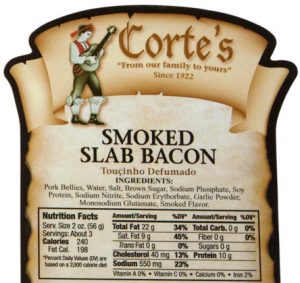The Food and Drug Administration (FDA) has rolled out several important changes to food labeling requirements. These updates to nutrition labels include the addition of “added sugars,” removal of certain vitamins, and adjustments to daily values.
Companies with over $10 million in revenue were required to comply by January 1, 2020, while smaller companies had until January 1, 2021. Even so, it’s always better to update early because waiting too long risks costly fines.
As providers of food and beverage label manufacturing services, United Label recommends understanding these changes thoroughly before updating your product packaging.
Why the FDA Implemented these New Nutrition Labels for 2020 and What are the Changes

The goal of these updates is to provide consumers with clearer, more accurate nutritional information. Some of the most visible changes include:
- Calories in bold, larger font for easier readability.
- Added sugars as their own category to help consumers make healthier choices.
- Updated footnote clarifying daily values based on a 2,000-calorie diet.
Let’s break down the details.
Added Sugars
The FDA introduced “Added Sugars” as a separate category. The reasoning: it’s harder to maintain a healthy diet if more than 10% of daily calories come from added sugars.
Daily Value Percent Changes
According to the FDA’s new 2020 rules, the daily value percentage of any vitamin or mineral is not to exceed 100 percent. In addition, Vitamins A and C have been removed due to a lack of relevance considering the rarity of having a deficiency. Replacing those two vitamins are potassium and iron.
This change reflects the fact that the average American does not consume sufficient amounts of either nutrient on a regular basis.
Dietary Fiber and Sodium
The changes also include the updated daily recommended values for dietary fiber and sodium. Sodium had a recommended DV (daily value) of 2400 mg per day. The new value is now 2300 mg. In addition, dietary fiber changed from daily recommendations of 25 g to 28 g.
These changes stem from a larger movement per the WHO (World Health Organization) in a global effort to improve heart health worldwide. Dietary fiber contributes to overall digestive health. Foods containing significant amounts of dietary fiber tend to be heart healthy and micronutrient dense. Thus, it’s in line with the effort to improve public health.
Changes to Footnote of Nutrition Labels
The very bottom of the label was redone to draw attention to the meaning behind daily value percentages. The new text explains the daily value percentage as it pertains to meeting nutrient need according to the advisement of a 2000 calorie diet.
Emphasis previously was placed on the issue of caloric consumption based upon one’s personal needs.
If you’ve been considering updating your labels with new graphics or designs to give them a fresh look, now is the perfect time to do both — and our food and beverage label manufacturing services can help make sure your labels are compliant and on-brand.
Updating your look and nutrition labels now will give your brand the opportunity to refresh its packaging design. It’s also a great time to modernize with improved graphics, layouts, and materials.
At United Label, we specialize in food label manufacturing services and beverage label manufacturing services that meet FDA requirements while helping your brand stand out. Our team ensures every label is compliant, visually appealing, and cost-effective.
Contact us today at 973-589-6500 to get started.